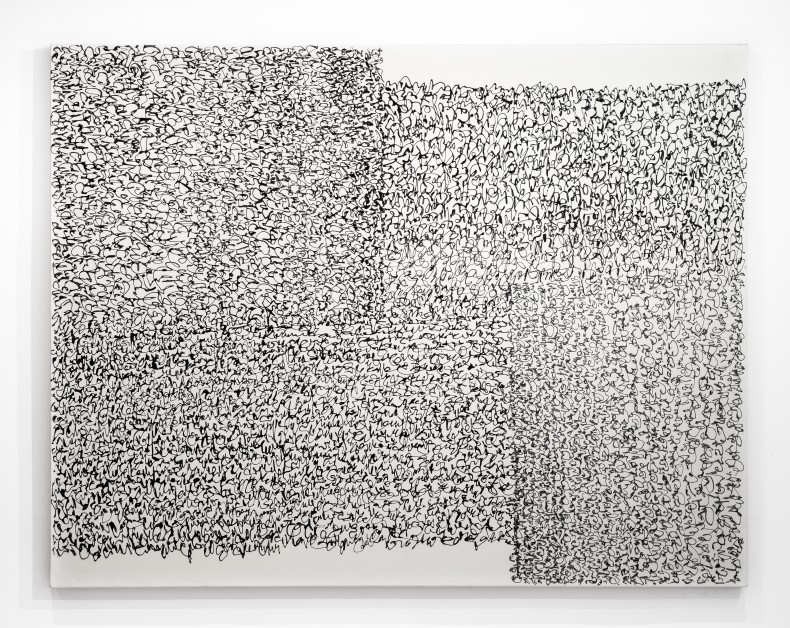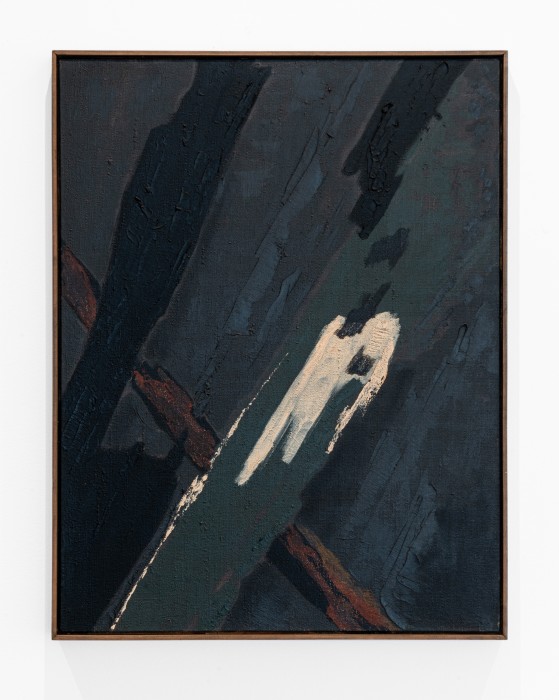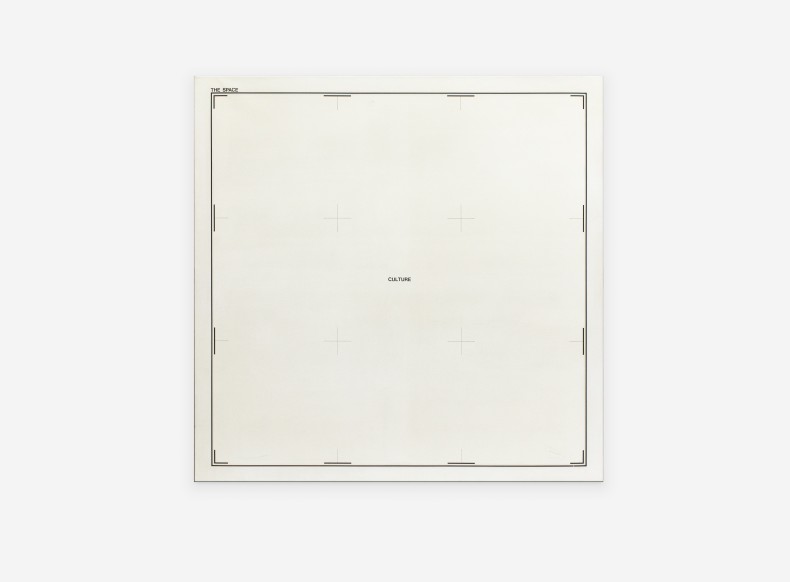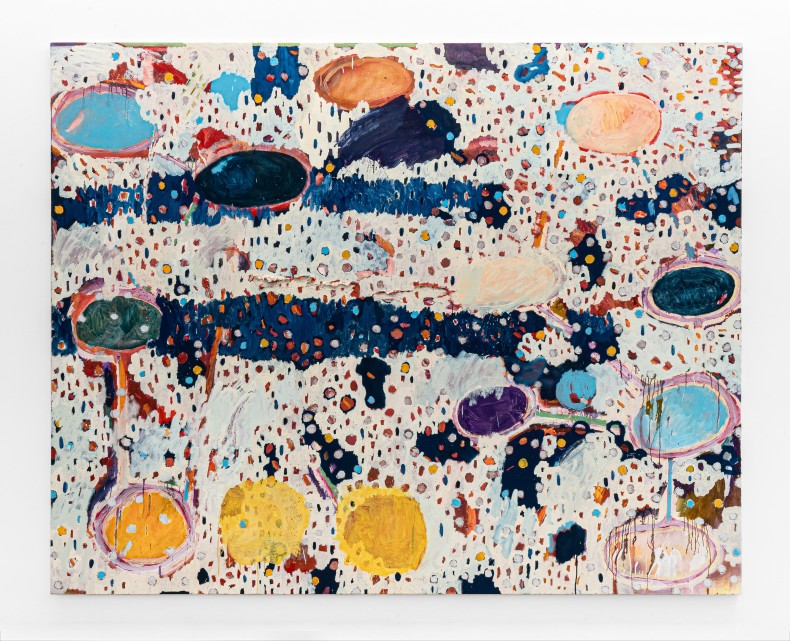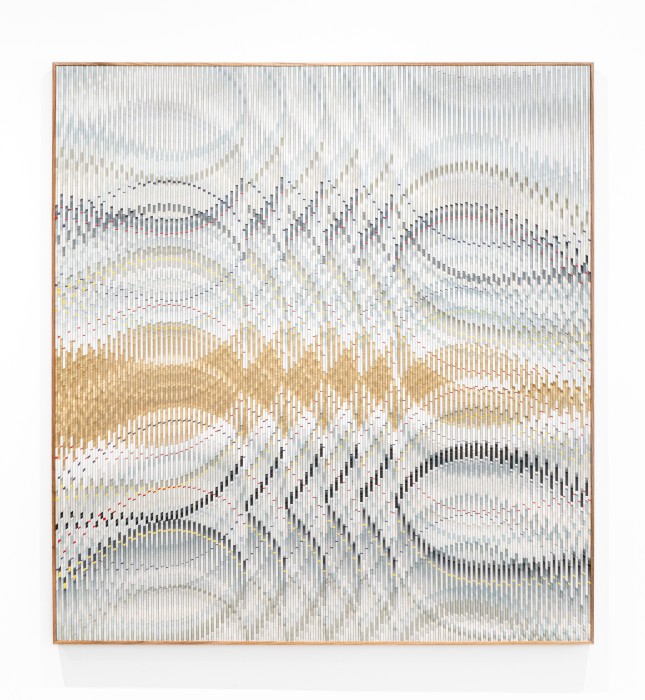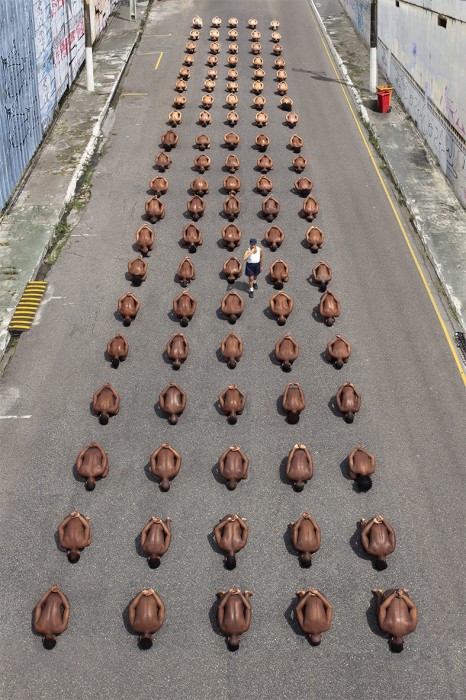Galeria Nara Roesler is pleased to participate in three sectors of Art Basel Miami Beach 2019: Galleries, Meridians and Kabinett.
At the Galleries sector, Galeria Nara Roesler will present a selection of works by Brazilian and international artists including Antonio Dias, Artur Lescher, Berna Reale, Carlito Carvalhosa, Daniel Buren, Daniel Senise, Isaac Julien, Julio Le Parc, León Ferrari, and Tomie Ohtake.
Galeria Nara Roesler's Kabinett sector presentation is centered around paintings produced between the 1950s and 1960s by Japanese-born Brazilian artist Tomie Ohtake (1913 – 2015). Ohtake experimented with abstract painting through a rich and varied juxtaposition of lines, shapes and colors. She chose to investigate expressive painting techniques by applying loose brush-strokes and creating geometric, albeit ethereal forms, which were influenced by Zen philosophy.
At the Meridians Sector, in partnership with OMR and Almine Reich galleries, Galeria Nara Roesler presents Machine River by Brazilian artist Artur Lescher. Conceived in 2008, Machine River is a seminal work in the artist's career. The large-format sculpture consists of several layers of stainless-steel mesh suspended by hanging rods, which shape echoes that of a waterfall. The work encompasses central aspects of the artist’s production, such as investigations around nature, and more specifically the river. In this piece, Lescher problematizes gravity and its limits, while challenging notions of material and visual weight and strength. The artist also invites the audience to reflect upon dualities that lay between the natural and the manmade.
Also at the Meridians Sector, Galeria Nara Roesler, in partnership with Victoria Miro gallery, presents a multi-screen film installation titled A Marvellous Entanglement (2019) by British filmmaker Isaac Julien. Part homage, part poetic journey, the film orbits the work and life of the Italian-born Brazilian architect Lina Bo Bardi. Inspired by both official and anecdotal stories about the architect, the film is shot across seven buildings designed by Bo Bardi; four in Salvador in Brazil’s northeast region of Bahia, three in São Paulo. Each becomes a locus for a performance, intervention, enactment or reinvention of scenes that have shaped the history of, and the legends around, the architect. In a country where a fragile democracy tries to survive after a dictatorship that lasted 21 years, Isaac Julien looks at Lina Bo Bardi as a character whose voice can still shed light on issues that were as important then as they are today.
